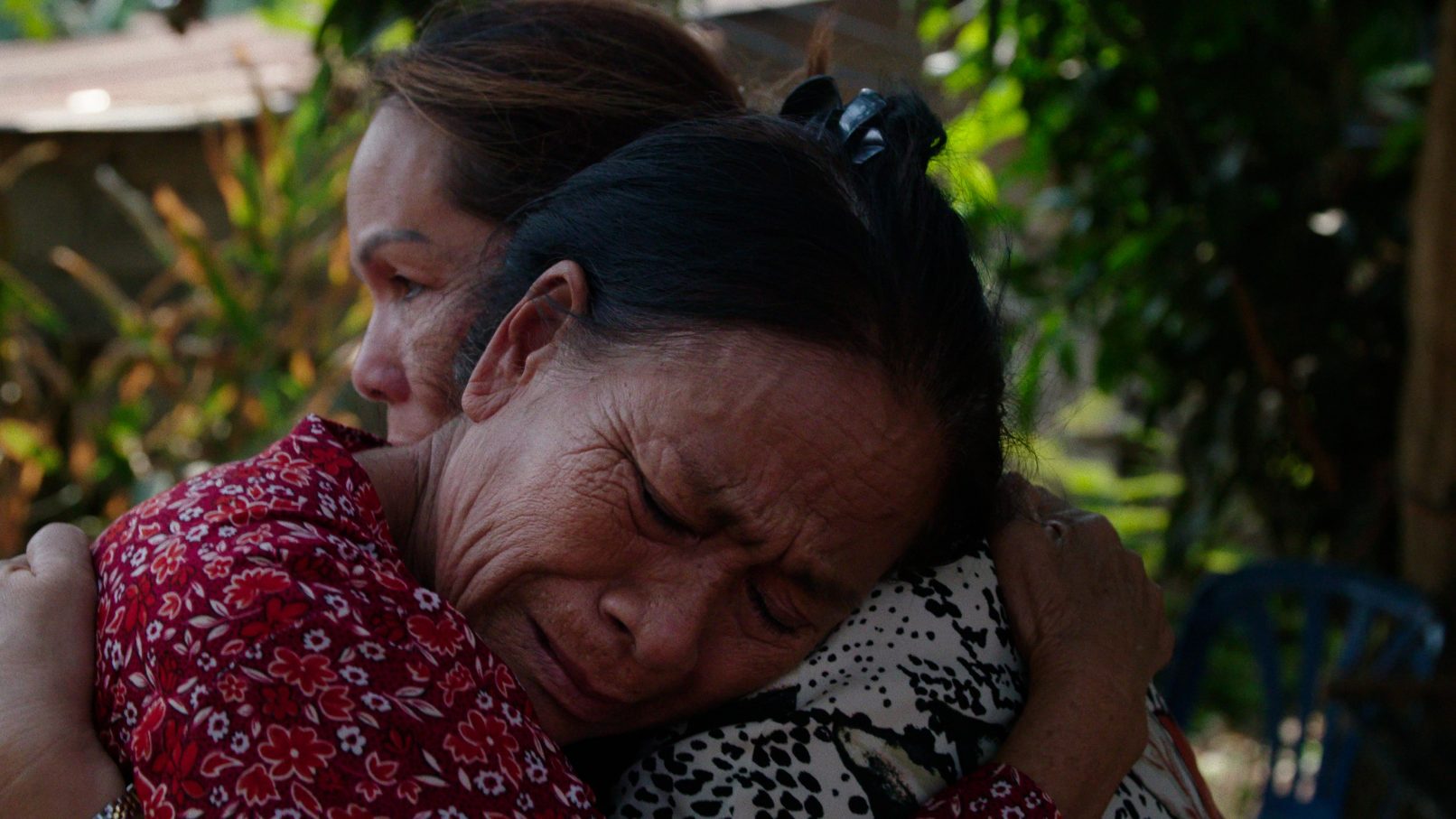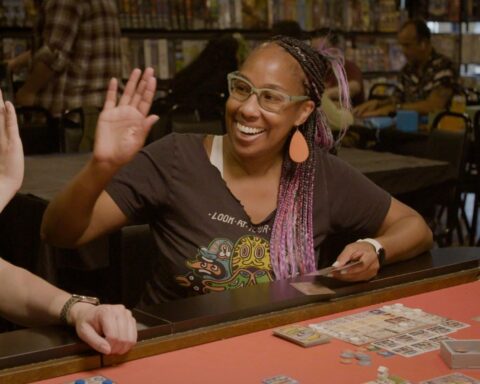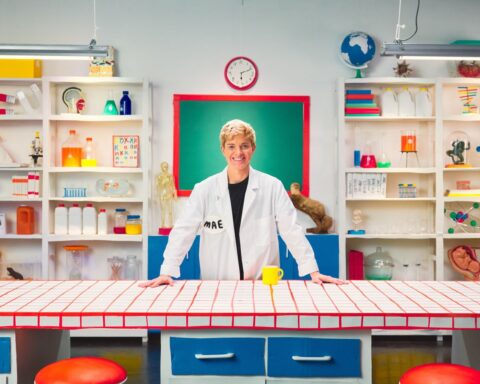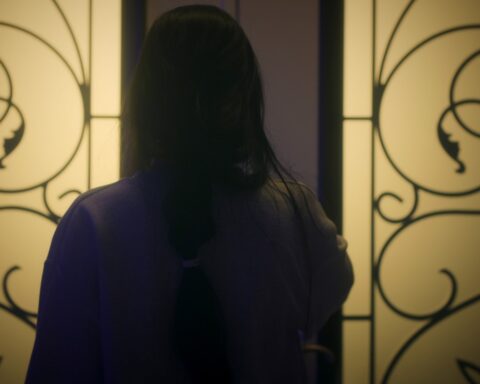Heartbound is an epic love story nearly a decade in the making. It’s a different kind of love story, however, as directors Sine Plambech and Janus Metz follow the journeys of several Thai women who move to the small village of Thy, Denmark after finding matches with Danish men. The film builds upon Plambech’s research that began with Sommai, a former sex worker who escaped her life in Thailand when she met a Dane named Niels who was in her town for vacation. Heartbound observes Sommai and her family members as she plays matchmaker for women from her community back home and pairs them with Danish men in mutually beneficial relationships that offer each party hope for a better life.
Heartbound is an extraordinary tale that spans years and continents as Plambech and Metz chart the dynamics of marriage and migration that shape the destination of each couple. The fifth couple documented by the film is that of the filmmakers themselves. Plambech, an anthropologist at the Danish Institute for International Studies and professor at Columbia University’s Barnard College, and Metz, a filmmaker who previously won the Grand Prix of the Semaine de la Critique at the 2010 Cannes Film Festival for his documentary Armadillo and directed last year’s TIFF opening night gala Borg/McEnroe, offer a meeting of the minds that captures the stories with empathy and humanity. But their relationship with the film and their subjects is one of give and take, as their lives became intimately linked with those of Sommai and her family throughout the course of the production. It’s a powerful and compassionate study of humanity across borders, and arguably the standout documentary at this year’s Toronto International Film Festival.
POV recently sat down with Plambech and Metz during the TIFF ahead of Heartbound’s world premiere to discuss their project, the relationship with their subjects, and that four-letter word called “love.”
POV: Pat Mullen for POV
SP: Sine Plambech
JM: Janus Metz
This interview has been edited for clarity and brevity.
POV: Sine, how did you first learn of Sommai?
SP: I started working with Thai women 15 years ago in this small community. Every time I met with them, they said I had to meet Sommai. I quickly realized she would be the go to person. I arranged to meet her at the train station and we have known each other ever since. She was very good about speaking out about her experiences in Denmark and as a migrant. I worked with the women for three years before Janus and I met. She was really the one who helped make connections.
POV: What was the biggest challenge and the greatest reward of following these couples over seven years?
SP: We found different challenges. When you work with people who have different struggles, you have to be there when the camera is not there. We worked with them throughout the shoot. Part of it was being there as part of their lives throughout during the years when we were not filming and the many people to look after, that was part of my job.
JM: When you have such a huge character gallery, from a dramaturgical perspective, they often say not to follow more than three characters. It becomes more challenging to tie a story together and keep the empathetic connection with the characters. Just seeing how the material gallery grew and how the character gallery grew larger and into all different directions—there were all sorts of mirrors and reflections between characters. I wanted to follow every storyline and where it brought us. That meant a lot of attention, journeys, travels, and conversations. If you’re dealing with two characters, that would be much more contained. Some of ours were in Thailand, some were in Denmark, so it was a big logistical challenge.
POV: How many trips to Thailand did you make?
JM: Five or six. In the early stage of shooting, we did one or two trips that were about a month long each. Sine was there on her own for the UN too and picked up a few things we needed to do.
SP: I think it was seven or eight times because I also went there alone. Many of the women and their husbands go back in the winter, so we wanted to see how that unfolded. The women can only stay in Thailand for three or six months, and then they will lose their permanent residence [in Denmark]. With Sommai, that leads to the dilemma of where to stay in the end.
JM: I think the main reason for them to travel is financial.
POV: How did the families feel about committing to such long shoot?
SP: One part was that I had worked with the women three years before. When started shooting initially, the plan wasn’t to follow then for 10 years. It’s more that we started out and then had a break. I continued to have contact with them, and [Janus and I] had a conversation where we realized that one of the couples was getting divorced, the children were growing older—we started to talk about whether we should film then again and they were open to it when we asked.
JM: We originally made two one-hour films in 2008, so the film really stands on the shoulders of the original project. We were really interested in the longitudinal study and the cross-generational study of how and when does a migration story become an integration story. The project is ultimately about bringing your family out of poverty, so the measurement at the end is whether your children are lifted out of that context, which raises another set of questions about fitting into a new culture. We wanted to examine these micro-mechanisms of migration and integration on a very intimate level, not just between man and woman, but also through children who travel.
POV: Mark, Kae’s son, is such a great character in the film. How was it watching him grow up?
SP: We have three children and he’s almost become our fourth child. It’s been very emotional to follow him and see how he’s trying to bridge this life between Denmark and Thailand. It was seven years before he went back to Thailand to see his dad. Following someone on camera and off camera, and seeing him grow older, we have been a part of his life for so many years.
JM: There’s something very visceral and powerful about seeing the years pass on camera. We saw that in Boyhood, the power of seeing someone grow older before you in a condensed space of time. Boyhood had a real documentary exploration of what it means to grow up and what that looks like. Now there are Facebook and social media gimmicks where people take pictures of themselves every day and you see that progression. I think Mark felt that he had a safe space with us because we were interested in him. We didn’t have any ambitions or expectations on his behalf. He’s under a lot of pressure from his mom and the Thai community to “be someone,” and at the same time, he’s struggling to fit with a Danish community that often doesn’t understand him. He could talk to us without fear of feeling like a failure.
For the women, it’s also about owning their stories and not being afraid of where they come from. I think that’s the most beautiful aspect of the film. That [ownership] has been embraced by the Thai-Danish community. Back in 2008, there were a lot of people who were scared that these stories would be too revealing and might lead Danes to see them as gold diggers or prostitutes. If you can touch something in a true way so that it vibrates with all its complexity and nuances, then it’s a moment of grace.
SP: Sommai gave a beautiful opening speech when we had a pre-premiere in Denmark. She said, “These are our real lives. This is how it is. Don’t be ashamed.” She said that in Thai to women in the audience. This thread of not being ashamed is central to the story.
JM: What Sine is saying is key. Ultimately, I think our film is about dignity. How do you achieve a sense of dignity of self? Telling your story, putting it into context, and using it to create dignity is what Sommai’s life is all about. And for the men too. If you’re lonely and if you’re working on the assembly line all your life, and you might see the Grim Reaper at the end of the line and wonder, “How can I seize life? How can I feel a sense of importance?” To be able to say, “I was here. I felt. I loved.” That is also about dignity. Otherwise, it’s just a slow suicide.
POV: How did your own relationship evolve? I understand you got married over the course of the production?
SP: When we started out, it was completely professional. I was working as an anthropologist with the women and doing other things with the UN. When we finalized the two first films, that was when we became a couple.
JM: We realized we wouldn’t be working together any more.
SP: Working among these women and this community for so many years, that’s my blood, my heart. Then working with someone else and giving him access to it, I saw how it materialized into this complex picture. When you put out two films without having any big discussions, you realize it might be possible to be a couple. It also means that we have become a family. I had two children from a former marriage, so we had a family reunification within our own sphere as the families do in the film. I think the reason why they’re so generous with us is that we have been very generous about our own mess. When I talk to the women, that matters. They can talk to me about their children in Thailand with Thai fathers. They have this divorced family across borders, whereas we just have it within Denmark. In order to have that generosity, you have to give something of yourself.
JM: They’ve watched our children grow up. We have one child together and two from Sine’s first marriage. They’ve watched our kids—we have a six-year-old, a 14-year-old, and a 22-year-old. The 14-year-old was in the Thai village with Sine when he was two. They’ve witnessed our lives just as we’ve witnessed theirs. Our daughter went to kindergarten there and played with their kids.
POV: So you have quite the relationship that goes two ways. The film is part of all your lives.
SP: We’re often asked how we make a professional distance and look at the situation from the outside. Why? Over 10 years, it’s not really possible to look at people from the outside. We’re completely on the inside and part of the dynamic of their families. It’s important not to be voyeurs with the camera, and to be there even when the camera isn’t on.
JM: It’s been a collaboration. When you film over such a long time, people start owning their stories. They become part of the “possession” of filmmaking if you talk about people like Vertov or Jean Rouch and direct cinema. There’s a possession happening both behind and in front of the camera that produces that truth. People start embodying their stories and performing. I’m not saying that self-performance is fake—it’s taking ownership of the story. The people in the film would call us and tell us, “The dog is sick. Do you want to come film?” I know that’s important since John [a Dane who marries Sommai’s friend Mong] has abandonment issues because his first wife killed herself. This dog is like his child.
POV: That’s a very emotional scene.
JM: We know that our film is driving towards this requiem of a life-death meditation, so the death of the dog is quite important. It put meaning into other things that happened as one story spilled into the next. They’re individual characters in their own right, but, dramaturgically speaking, they’re fractions of each other. Saeng is a young version of Sommai. She makes the same choices Sommai did. Sommai goes to the bar where she works and tells her where there’s a will, there’s a way.
POV: How is the growing Thai population of Thy affecting the larger community? What is the overall climate in Denmark towards migration?
SP: Thai migrants are described as “good migrants.” There are “good migrants” and “bad migrants” in the Danish and European debates. Migrants from South Asia, and marriage migrants like Thai or Filipina women, are not often part of the larger public debate because there is so much attention given to immigrants from Muslim countries and the difficulties people think they have in integrating into European countries.
What they do experience is more a kind of sexism. People may assume they sold themselves to go there. That kind of sexual imaginary about Thai women and Thai women’s bodies is central to that group of migrants. But because they aren’t part of the labour market, they’re not considered threats.
JM: There is a lot of prejudice and stereotyping around these relationships. The women are sometimes perceived as sex slaves while the men may be seen as perverts or losers. That is what drove me, and Sine’s research, the questions about global structures and inequalities. What is the human heart that beats behind this?
SP: It’s very peculiar—90% of the Thai migrants in Europe are women. The gender ratio is very special with the overlap between marriage migrants and labour migrants. You might have to marry in order to work, or start working after marrying, so they don’t experience the same kind of stigma other migrant groups experience. On the other hand, Thai women are the largest nationality of women that Danish men are marrying outside of Danish women, which is a trend happening in other European countries as well. The film is also a story of a new kind of family formations.
POV: Dating has changed so much as the film evolved. Does Sommai’s matchmaking process seem less strange in the age of the Tinder Swipe?
JM: When there’s a seven year cut in the film, everyone’s on their tablets when they come back. For the women, everyone’s in touch with their children. A tablet isn’t the same as physical interaction, but there is a connection to home.
SP: The Thai women who arrive now, they don’t meet men in the old fashioned way with photos. Many of them talk on Skype before they meet. When you talk about dating, why is it wrong to meet through those kind of venues? So many people meet either in Tinder or online now. I think the film opens up the conversation about what is the right way to meet.











